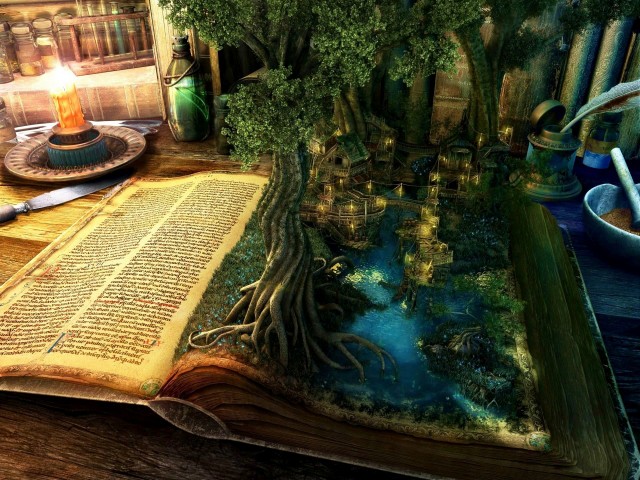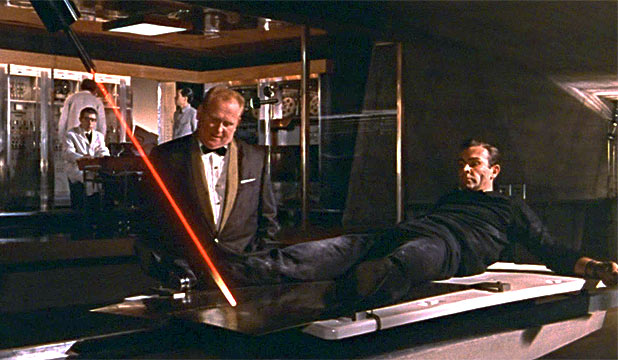
From Stoneage campfire stories to Greek epic poems to Shakespeare to Breaking Bad, it seems man has always been into making up, telling and enjoying stories that are not true – escaping to a parallel reality invented by someone else.
What are the differences between various ways of telling stories?
Here is an attempt at a list:
|
How do you express/explain… |
Shakespearean drama |
Modern dramas |
Films and TV series |
Novels & short stories |
|
People’s emotions |
Monologues – they will say what they feel to themselves or the audience
|
Body language Facial expressions The way they speak Things they do |
Same as modern dramas plus: Music – sad, romantic, dramatic, exciting Different shots, cuts, colours Voiceover |
You write what they feel |
|
People’s thoughts |
Monologues |
Dialogues, |
Dialogues, voiceover |
You write what they are thinking |
|
The backstory (things that happened before) |
Prologue – someone tells the audience what has happened |
Retrospective technique – the characters talk about the pas |
Voiceover Flashbacks – scenes from the past |
The author explains/ tells it |
Are there patterns that stories generally follow?
Novels and short stories generally contain certain elements that are always there. There is always some kind of main problem or mystery that needs to be resolved. Generally, short stories follow this pattern:
Exposition (where the setting and characters are introduced)
Rising action (where the main problem/mystery is introduced, and things get increasingly exciting/difficult/ dramatic etc.)
Climax (the point where excitement/ tension/ drama is at its highest)
Resolution (where the main problem/ mystery is solved or resolved). Here there is often an epiphany.
Novels follow a similar pattern, but often contains lots of subplots and mini-climaxes, as well as jumps in time and more experimental elements. There is more variety in the novel genre than in most other genres of fiction.
How all Hollywood movies follow the same pattern

OK, not all of them, but most newer Hollywood movies and especially mainstream movies with action and superheroes follow a pattern that is incredibly detailed and specific. It is known (for some mysterious reason) as the «Save the Cat» Beat Sheet. Screenwriter Blake Snyder is often credited with inventing this, but he claims he made it on the basis of his observations of how great movies work, not his personal ideas of what should be in them.
THE BLAKE SNYDER BEAT SHEET (aka Save the Cat)
This structure consists of 15 «beats», or parts, which MUST be there. Often they come at exactly the same moment in time. In a Hollywood-formatted screenplay, one page equals about one minute of film. The Dark Knight is used as an example here, but does not fit 100% time-wise.
See if this fits your favorite movie!
| Name of the «beat» | What happens/ what do we see in your film Example: Dark Knight |
| Opening Image (1) – A visual that represents the struggle & tone of the story. A snapshot of the main character’s problem, before the adventure begins. | (at 1:14) An explosion in a tall glass building, representing order being shattered by chaos, danger and crime. |
| Set-up (1-10) – Expand on the “before” snapshot. Present the main character’s world as it is, and what is missing in their life. | (1:00-10:47) A huge bank robbery by the Joker and his gang – scenes of Gotham City being terrorized by criminals, the police are powerless to do anything, Batman fighting crime. |
| Theme Stated (5) (happens during the Set-up) – What your story is about; the message, the truth. Usually, it is spoken to the main character or in their presence, but they don’t understand the truth…not until they have some personal experience and context to support it. | (5:47)The Joker shows his face for the first time, acting like a total psychopath |
| Catalyst (12) – The moment where life as it is changes. It is the telegram, the act of catching your loved-one cheating, allowing a monster onboard the ship, meeting the true love of your life, etc. The “before” world is no more, change is underway. | (around 24:00) The Joker offers to kill Batman if he gets half of all the Mafia’s money – OR -(around 42:00) The Joker kills a fake Batman, promises to kill kill people every day until Batman unmasks |
| Debate (12-25) – But change is scary and for a moment, or a brief number of moments, the main character doubts the journey they must take. Can I face this challenge? Do I have what it takes? Should I go at all? It is the last chance for the hero to chicken out. | Batman is considering leaving crime-fighting to politician Harvey Dent. He decides to do so (1:07:47) |
| Break Into Two (Choosing Act Two)(25) – The main character makes a choice and the journey begins. We leave the “normal” world and enter the upside-down, opposite world of Act Two. | (1:11:37) Harvey Dent turns himself in as Batman. He will be used as bait to try to get the Joker. |
| B Story (30)– This is when there’s a discussion about the Theme – the nugget of truth. Usually, this discussion is between the main character and the love interest. So, the B Story is usually called the “love story”. | (around 45:00) Wayne/ Batman discuss his role with Rachel, his ex (and present girlfriend of Harvey Dent |
| Fun and Games – This is the fun part of the story. This is when Indiana Jones tries to beat the Nazis to the Lost Ark, when the detective finds the most clues and dodges the most bullets. NOTE: this is often the part where the trailer comes from. | (1.11.37-1:22:30) Batman and the police close in on the Joker and… |
| Midpoint – Dependent upon the story, this moment is when everything is “great” (or everything is “awful”). The main character either gets everything they think they want (“great”) or doesn’t get what they think they want at all (“awful”). But not everything we think we want is what we actually need in the end. False defeat or false victory. |
(1:22:30 – the middle of the film) Batman almost gets killed, but then the Joker is caught and arrested. False victory! |
| Bad Guys Close In – Doubt, jealousy, fear, enemies both physical and emotional regroup to defeat the main character’s goal, and the main character’s “great”/“awful” situation disintegrates. | (1:23:00- 2:00:00)
The Joker starts a horrific killing spree, blowing up a hospital among other things. |
| All is Lost – The opposite moment from the Midpoint: “awful”/“great”. The moment that the main character realizes they’ve lost everything they gained, or everything they now have has no meaning. The initial goal now looks even more impossible than before. And here, something or someone dies. It can be physical or emotional, but the death of something old makes way for something new to be born. | (2:00:00)
The population of Gotham has been evacuated onto two ships; one for criminals, and one for others. However, the Joker announces that he has explosives in the ships, and can blow them all «sky high» if they try to leave. Both the ships have a remote that will blow up the other boat. If one of the ships blows up the other, people on that ship will live. If none of them do, both the boats will explode at midnight. |
| Dark Night of the Soul – The main character hits bottom, and wallows in hopelessness. The Why hast thou forsaken me, Lord? moment. Mourning the loss of what has “died” – the dream, the goal, the mentor character, the love of your life, etc. But, you must fall completely before you can pick yourself back up and try again. | (2:11:00) The passengers on the ships wonder what to do. Shall they kill lots of people to save themselves? |
| Break Into Three (Choosing Act Three) – Thanks to a fresh idea, new inspiration, or last-minute advice from the B Story (usually the love interest), the main character chooses to try again. | (2:08:08) Batman uses hi-tech surveillance equipment to find the Joker. |
| Finale – This time around, the main character incorporates the Theme – the nugget of truth that now makes sense to them – into their fight for the goal because they have experience from the A Story and context from the B Story. | (2:08:08-2:24:00)
Eventually Batman finds the Joker (while the clock is ticking towards midnight). He does not kill him, however, and the Joker does not kill Batman because «you and I are destined to do this forever». He destroys his surveillance equipment.The police tries to find Batman, but he disappears into the night |
| Final Image – opposite of Opening Image, proving, visually, that a change has occurred within the character. | Batman rides his super-cool motorcycle into the night. Fade to black. Voiceover «he is the dark knight». |
THE END
From https://timstout.wordpress.com/story-structure/blake-snyders-beat-sheet
Want to become a Hollywood screenwriter? Lots of info and resources at Blake Snyder’s own website, http://www.savethecat.com/.

